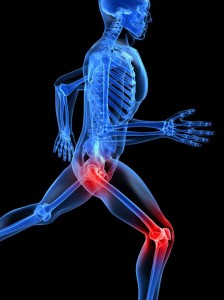What do Osteopaths Treat
 To me this may seem obvious, and I’m sure many of you have a good idea of how Osteopathy may help. I often find that people associate Osteopathy with back pain, which isn’t a bad start. Around 80% of clients visiting an Osteopath come in with back pain, and we assess the back in all patients (as well as the whole body) as postural imbalances can have an impact on the presenting problem for many types of complaint.
To me this may seem obvious, and I’m sure many of you have a good idea of how Osteopathy may help. I often find that people associate Osteopathy with back pain, which isn’t a bad start. Around 80% of clients visiting an Osteopath come in with back pain, and we assess the back in all patients (as well as the whole body) as postural imbalances can have an impact on the presenting problem for many types of complaint.
A good example of this is someone recovering from an acute ankle sprain, the obvious site of the problem would be the ankle. However this person will likely be walking with (or had been walking with) a limp, which could put strain on the pelvis, back or opposite limb through over compensating.
What is Osteopathy?
The General Osteopathic Council, our regulating body, describe Osteopathy as “a system of diagnosis and treatment for a wide range of medical conditions. It works with the structure and function of the body, and is based on the principle that the well-being of an individual depends on the skeleton, muscles, ligaments and connective tissues functioning smoothly together.”
 What does this mean to our Clients?
What does this mean to our Clients?
Well this means that your body is capable of self healing (in many cases) and that optimal healing takes place in the optimal environment. As Osteopaths we look at how you adapt to your complaint or how it arose in the first place and work with you and your body to facilitate optimal healing. This principle is adopted in many therapies including modern medicine, a fracture is set in a cast to provide you with the stability needed to allow bone repair, antibiotics are prescribed to fight off bacterial infection so that you can recover. As an osteopath we may facilitate healing by improving motion and allowing your body to compensate during recovery.
 What we Treat?
What we Treat?
Its important to point out that, as we work to facilitate the bodies own ability to heal, one may assume or argue that we can potentially treat many types of conditions. However, as a regulated profession we adhere to guidelines guiding best practice and use an evidence base to inform our treatments. Referred to as evidence based or evidence informed medicine.
This means that we can provide therapy for many conditions but can not offer or imply that we can cure the problem without a strong evidence base (backed up by research).
The Committees of Advertising Practice have accepted that Osteopaths provide treatment for:
- generalised aches and pains,
- joint pains including hip and knee pain from osteoarthritis as an adjunct to core OA treatments and exercise
- arthritic pain,
- general, acute & chronic backache, back pain (not arising from injury or accident)
- uncomplicated mechanical neck pain (as opposed to neck pain following injury i.e. whiplash)
- headache arising from the neck (cervicogenic) / migraine prevention
- frozen shoulder/ shoulder and elbow pain/ tennis elbow (lateral epicondylitis) arising from associated musculoskeletal conditions of the back and neck, but not isolated occurrences
- circulatory problems,
- cramp,
- digestion problems,
- joint pains, lumbago,
- sciatica,
- muscle spasms,
- neuralgia,
- fibromyalgia,
- inability to relax,
- rheumatic pain,
- minor sports injuries and tensions.





